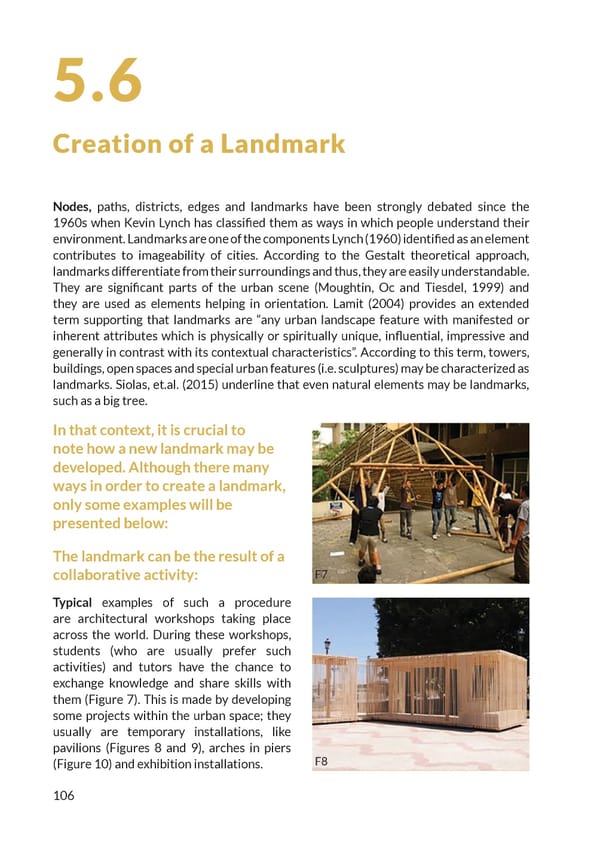5.6 Creation of a Landmark Nodes, paths, districts, edges and landmarks have been strongly debated since the 1960s when Kevin Lynch has classified them as ways in which people understand their environment. Landmarks are one of the components Lynch (1960) identified as an element contributes to imageability of cities. According to the Gestalt theoretical approach, landmarks differentiate from their surroundings and thus, they are easily understandable. They are significant parts of the urban scene (Moughtin, Oc and Tiesdel, 1999) and they are used as elements helping in orientation. Lamit (2004) provides an extended term supporting that landmarks are “any urban landscape feature with manifested or inherent attributes which is physically or spiritually unique, influential, impressive and generally in contrast with its contextual characteristics”. According to this term, towers, buildings, open spaces and special urban features (i.e. sculptures) may be characterized as landmarks. Siolas, et.al. (2015) underline that even natural elements may be landmarks, such as a big tree. In that context, it is crucial to note how a new landmark may be developed. Although there many ways in order to create a landmark, only some examples will be presented below: The landmark can be the result of a collaborative activity: F7 Typical examples of such a procedure are architectural workshops taking place across the world. During these workshops, students (who are usually prefer such activities) and tutors have the chance to exchange knowledge and share skills with them (Figure 7). This is made by developing some projects within the urban space; they usually are temporary installations, like pavilions (Figures 8 and 9), arches in piers (Figure 10) and exhibition installations. F8 106
 MemoryHandbook new Page 105 Page 107
MemoryHandbook new Page 105 Page 107